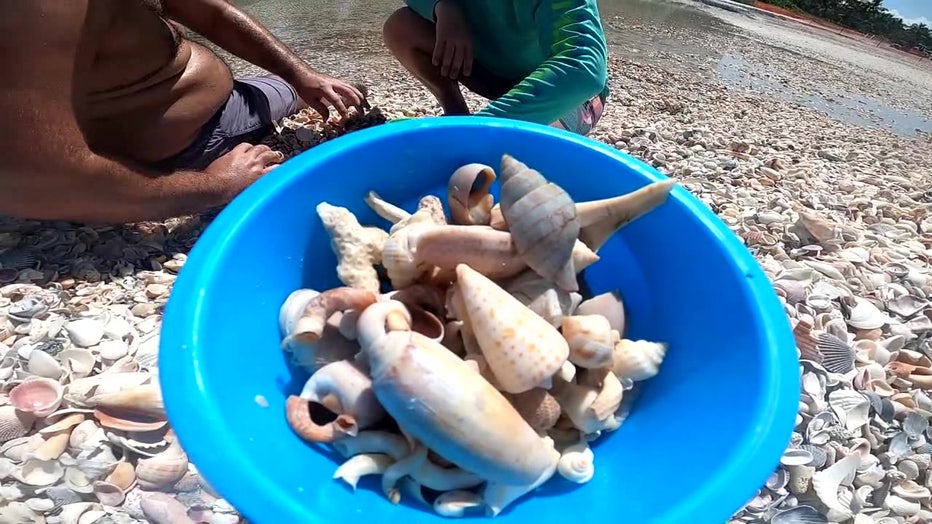Shelling in Florida: Here’s what to know before picking up a seashell
BRADENTON, Fla. - The Bay Area boasts some of the most beautiful beaches in Florida that are lined with tens of thousands of shells, but before you take one home, there are a few things to keep in mind, so you don’t receive a fine.
According to the Florida Fish and Wildlife Commission, beachgoers are allowed to collect seashells for recreation, but they must take into consideration whether the seashell contains a living organism, the type of organism it contains and where it is being harvested.

Stock photo
Seashells with live organisms cannot be sold unless the seller has a valid commercial license.
Live oysters and live hard clams can only be harvested when in compliance with FWC rules.
READ: Tampa Bay Watch re-purposes discarded oyster shells, rebuilds coastline
All species of clam, oyster and mussel can only be taken from designated approved or conditionally approved shellfish harvesting areas that are in currently open by the Florida Department of Agriculture and Consumer Services.

Stock photo
In Manatee County, people may not harvest or have more than two shells (includes echinoderms such as sand dollars and starfish) containing live organisms of any single species except for oysters, hard clams, sunray venus clams and coquinas per day, according to FWC.
READ: Suspected sea life poachers steal hundreds of protected animals from Manatee County waterways
A little further south in Lee County, shells that contain a live organism except for oysters, hard clams (quahogs), sunray venus clams and coquinas may not be harvested.
Harvesting certain species may be limited or prohibited in state or federal parks, national wildlife refuges and portions of the Florida Keys National Marine Sanctuary.
Prohibited species
- Bahama Starfish - all harvest is banned
- Live Queen Conch - Possession is banned
According to the FWC, it is not illegal to possess queen conch shells in Florida if the shells do not contain any living queen conch at the time of collection, and so long as a living queen conch is not killed, mutilated, or removed from its shell prior to collection. Possession of conch meat or a queen conch shell having an off-center hole larger than 1/16 inch in diameter through its spire is prohibited.
Bag Limits
Seasons, bag limits, and other regulations must be followed for species that are regulated by the FWC, such as bay scallops even when these species are not collected for food.
The bag limit for marine life (tropical ornamental) species is 20 organisms per person per day. Only five of any one marine life species is allowed within the 20-organism marine life bag limit.
For unregulated species, more than 100 pounds or 2 fish per person per day (whichever is greater) is considered commercial quantities and requires a saltwater products license.
Click here to learn more about shelling regulations in Florida.

